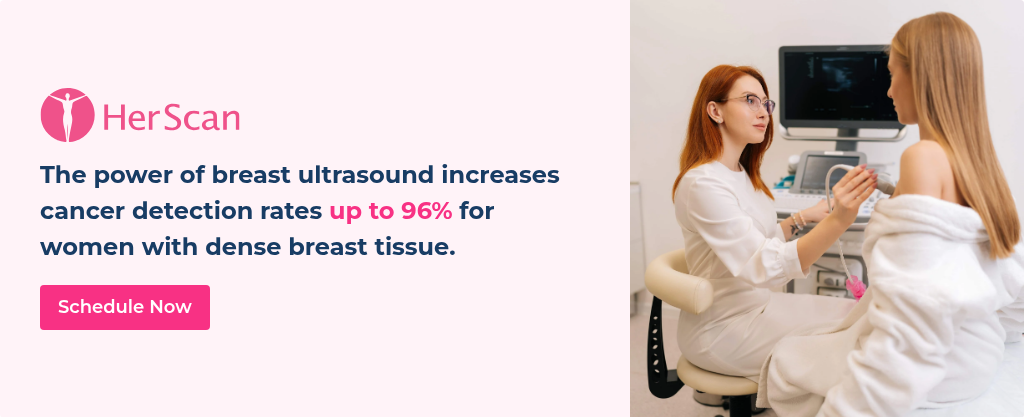Did you know that breast cancer rates are rising each year? Although breast cancer deaths are decreasing, women are being diagnosed at a higher rate than in the past. Breast ultrasound screening may help detect small areas of cancer that a mammogram may miss. Learn more about who may and may not benefit from an ultrasound for breast cancer screening and what you can expect during the process.
While the goal of breast ultrasounds and mammograms is to detect abnormalities, there are differences in how they are done. While a mammogram provides you with an X-ray of your breast, a breast ultrasound uses sound waves to create detailed images of your breast tissue.
Breast ultrasound screening may be right for you if:
- You have dense breast tissue.
- You have a specific area of concern or breast pain.
- You (or your provider) can feel a lump in your breast.
- You're younger than the recommended age for annual mammograms.
- You have a high risk of breast cancer due to genetics or family history.
- You want to be proactive by catching potential signs of cancer early.
Women with dense breast tissue can benefit from ultrasound screenings since they offer a clearer view of both the tissue and any suspicious areas seen on a mammogram.
Please note, HerScan offers breast ultrasound screenings, which are different from diagnostic ultrasounds. Rather, ultrasound screenings add another layer of imaging to look at alongside your annual mammogram. You can then share this information with your provider to make informed decisions about your health.
Breast Ultrasound Screening May NOT Be Right for You If...
Breast ultrasound screenings are a convenient way to detect early signs of cancer. However, they are not recommended in some cases. Breast ultrasound screening might not be suitable for you if:
- You are currently ill or have had a COVID-19 vaccine in the last 2 weeks.
- You have been diagnosed with breast cancer and are currently receiving treatment from a doctor.
Regular screenings like mammograms, breast MRIs and monthly check-ups are essential for breast health. By scheduling these assessments, you can detect potential issues early when treatments are more effective.
Ultrasound & Breast Cancer Screening: What the Evidence Says
The goal of screenings is to detect breast cancer early, when it is most treatable. Finding a lump is common and it doesn't necessarily mean you have cancer. You may have a breast cyst if the lump is filled with fluid. Solid lumps can either be benign or cancerous. There are many types of lumps, such as cysts and fibroadenomas. Your doctor can evaluate these and any other concerns found during screening.
An ultrasound for breast cancer screening is able to differentiate cysts from solid masses. It can also examine a lump you may find during a physical exam that may not appear on a mammogram.
What Will a Breast Ultrasound Show?
Unlike with mammography, ultrasound is not affected by breast density, and it may be able to pick up on cancers that are otherwise not seen on a mammogram. This is because ultrasounds provide a layered view without needing compression or radiation.
There are four categories of breast tissue density:
- Category A - Mostly fatty tissue with little fibrous and glandular tissue.
- Category B - Mostly fatty tissue but with a few areas of visible fibrous and glandular tissue.
- Category C - Many areas of fibrous and glandular tissue (40% of women receive this result).
- Category D - Extremely dense with large amounts of glandular and fibrous tissue (10% of women).
If your written report from your mammogram states you have either heterogenously or extremely dense breast tissue, then you are considered to have dense breasts.
What Should I Expect During a Breast Ultrasound Screening?
On the day of your appointment, please dress comfortably and avoid using lotion, deodorant or powders under your armpits. Upon arrival, you will complete a short form to share basic information about you and your family history.
Afterwards, you will go into the private exam room with a female sonographer, remove your clothing (from the waist up) and put on a gown. Breast ultrasound is painless since it doesn't require compression and takes about 20 minutes.
After you are finished, your test results are read by our board-certified radiologist. Then we will Email your results to the email address provided on the medical form within 7-10 business days.

